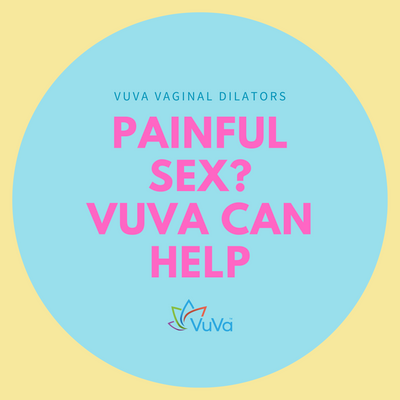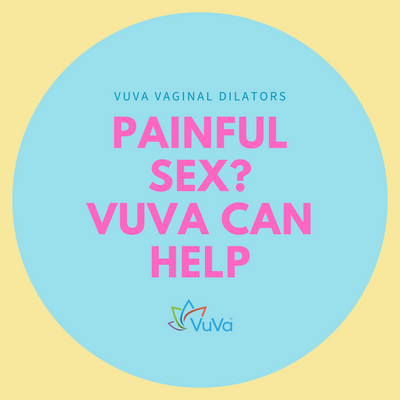
| Tara Langdale
Do you need a prescription for dilators?
People often think they’ll need to see a Doctor for a prescription for dilators, perhaps because dilators are used in various therapies. For example, pelvic floor therapists use dilators and, in a sense, ‘prescribe’ dilators for their patients to use at home. It’s not an official prescription, but more of a recommendation as the therapists understand the many benefits of dilators. A therapist may recommend regularly using a dilator at home as an adjunct to your clinical therapy. However the answer is no, you don’t need a prescription for our VuVa dilators.
If you were going to see a Doctor for a dilator prescription, you probably don’t know all there is to know about dilators yet, so you’ll no doubt have questions. As experts in the field, and makers of the best quality dilators on the market, we are happy to answer the most important questions about choosing and buying dilators. Read on to find out about the different types of dilators available, how to choose one (or more), how to use your dilators, and even how to get one for a great price!
What types of dilators can you get?
There is more than one type of dilator on the market, as the vagina isn’t the only area of the body that benefits from dilators. People may not openly discuss anal problems – even with Doctors – but it’s very common for people to have issues in the rectum. After all, the pelvic floor muscle group can become dysfunctional in various ways, for various reasons. Pelvic floor tightness is one of the most common issues. That’s why you can buy anal dilators (or rectal dilators) as well as vaginal dilators (vaginal trainers).
Rectal dilators
Men and women around the world use rectal dilators to restore anal capacity. The muscles of the rectum can become dysfunctional, just as the vaginal muscles can. One condition that affects both is stenosis (also known as stricture). This is a tightening of the canal, which deceases capacity and causes pain and discomfort, or other unpleasant issues.

Vaginal stenosis makes it difficult and painful to have sex or gynecological examinations. Anal stenosis can leave a person with the same issues, but primarily it is difficult to pass stools. This can lead to other problems such as toxicity in the bowel and anal fissures. Another rectal issue is levator ani syndrome , caused by muscle spasms near the anus. Such spasms can be very painful, even radiating outward to the hips, coccyx and other local areas. Anal dilators can help to ease both problems.
Vaginal dilators
Vaginal trainers are definitely the most popular product on our site, simply because there are so many gynecological conditions they can ease. Vaginal dilators are used for the following problems:
- Vulvodynia
- Vulvar Vestibulitis
- Vaginismus
- Dyspareunia
- Pelvic Radiation Therapy
- Menopause
- Vaginal Stenosis
- Vaginal Atrophy
- Pudendal Neuralgia
- Vaginal Agenesis
The list is long, but the great news is that using vaginal trainers really helps women to recover. It may not happen overnight, but it does happen, and our site is here to help with numerous guides, products, insights and tips on dilator therapy. Our blog contains articles on all of the above conditions and more, so take a look around to find advice for your condition.
How to choose the right dilator
The following will apply to you whether you are looking to buy a unisex rectal dilator or a vaginal trainer:
Choosing the right materials
First decide whether you would like to use magnetic, silicone or plastic dilators. It may help to read about the difference between magnetic and standard plastic dilators, and this article on silicone dilators. It is always important that your dilators are made from medical grade materials, for quality purposes and to mitigate the risk of infection. Rest assured that all VuVa dilators are made from medical grade materials.
If you are happy to spend a little more on your dilator sets, we recommend using the magnetic dilators. The Neodymium magnets make them twice as effective at reducing nerve pain and increasing healing blood flow to the area. We had this confirmed through a clinical trial that you can read about here.
Choosing the right size (and number of) dilators
If you don’t have an idea of your capacity, you could ask your physician or pelvic floor physical therapist what size you need to start with. Otherwise, using a ruler along with the size chart in this article about choosing dilator sizes, draw the sizes on a piece of paper and you should be able to visualize the dilator sizes.
If you can’t be sure, it might be best to go for a combo set so that you have more than one option, and when you’re ready to size up, you’ll already have the next tool in your kit. We also have sets of three and four dilators.
The same reasoning applies to buying a full set of dilators, which many people do, especially if they’re starting out with a smaller capacity. The aim is usually always to work up to the sort of size our largest dilator has, so it makes sense and is more cost effective to buy a full set of seven with a tube of lubricant.
Our dilators go up 1/4 inch in diameter from size 1 to size 7:
- Size 1 Length 4 inches Diameter .375 inches Circumference 1.17 inches
- Size 2 Length 4.5 inches Diameter .5 inches Circumference 1.57 inches
- Size 3 Length 5 inches Diameter .75 inch Circumference 2.35 inches
- Size 4 Length 5.25 inches Diameter 1 inch Circumference 3.14 inches
- Size 5 Length 5.75 inches Diameter 1.125 inch Circumference 3.53 inches
- Size 6 Length 6 inches Diameter 1.375 inches Circumference 4.32 inches
- Size 7 Length 6.5 inches Diameter 1.625 inches Circumference 5.09 inches
We have dilator options to suit everyone. Some people prefer to start out with one small dilator, or one larger one (if they have an idea of their capacity). Some people may only need one size, and some will benefit from the full set. Your healthcare provider may be able to help you figure this out if you’re still unsure.
How do you use dilators?
It is ideal for you to use vaginal dilators for around 20 to 30 minutes, once or twice 1-2 per day. Ensure you are laying comfortably (on your back is preferable) in a quiet place where you won’t be disturbed, as relaxation is paramount. If this schedule is too much for you, or inconvenient, simply use your dilators whenever you can, with this schedule as your goal.
Using rectal dilators is similar to using vaginal dilators, except that the area is generally a bit dryer and the muscles stronger and tighter. Therefore you will need use proper lubrication to prevent tearing or pain. You may also want to lay on your left side, but whichever position feels the most comfortable will be fine. Please see our rectal dilating guide for full instructions on anal dilator use.
Dilating should not cause much pain, although some discomfort is normal as you’re stretching the muscles beyond their usual capacity. We always recommend not going over a 3 or 4 out of 10 in terms of pain level. If it’s higher, you may need to drop down to a smaller size so as not to cause any injury or tearing.
Instructions are included with all of our dilators, but we recommend consulting with a pelvic floor specialist or your healthcare provider before starting any type of vaginal dilator or rectal health therapy.
Discounts on vaginal dilators
We know that you may be confined to a specific budget, and that plastic products are cheaper than dilators made of other materials. We can recommend plastic dilators as long as they are made from medical grade plastic. They work well and they are good value for money.
However, if you would like to reap the benefits of our patented magnetic dilators, we currently have a clearance sale on single magnetic dilators, so right now you can pick whichever size dilator you need at a large discount.
We have a clearance sale on our single magnetic rectal dilators, as well as the magnetic combo sets.
We have many more clearance offers on vaginal and rectal dilators - plastic, silicone and magnetic -and you can browse all clearance dilators here.
Resources
Vuvatech.com/blogs/care/reasons-you-might-need-rectal-dilators-and-how-to-relax-anal-muscles
Vuvatech.com/blogs/care/what-is-the-best-vaginal-dilator-for-you-a-guide
VuVa Helpful Links:
How do Neodymium Vaginal Dilators work?
7 Reasons for a Tight Vagina and How to Loosen
How to Relax Vaginal Muscles, Vaginismus & Sex
Vaginal Stretching - Keeping in Shape with Dilators
Do Dilators Really Work? Yes, and They can Improve Your Sex Life!













